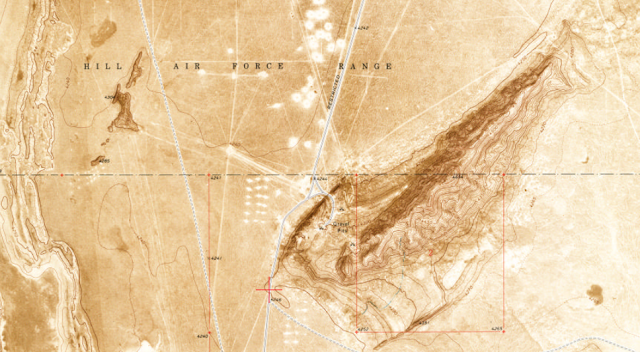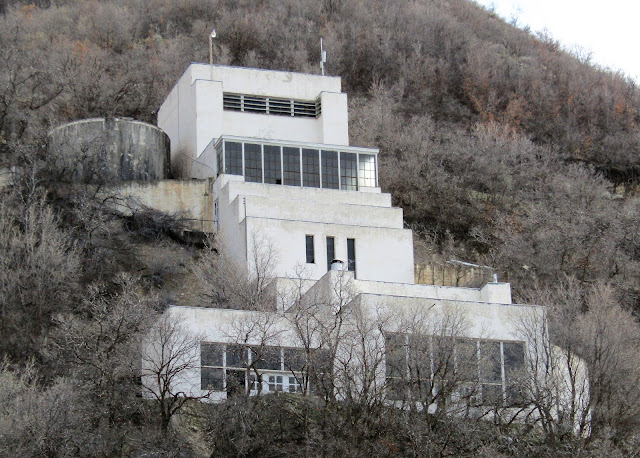Farmington Transient Relief Camp
by Peter
As the Great Depression began to take hold of the United States, the scope of the need quickly overwhelmed local and state charitable efforts. Although Herbert Hoover eventually, grudgingly approved the disbursement of federal loans to states, major relief did not start until after the inauguration of Franklin D. Roosevelt in 1933.
FDR authorized the creation of the Federal Emergency Relief Administration (FERA) in 1933, telling the first administrator, Harry Hopkins, to give immediate and adequate relief to the unemployed and to ignore any political considerations. Among many other, better-known programs like the WPA and CCC, FERA established a Transient Division.
As memorably portrayed in novels like The Grapes of Wrath, many people found themselves uprooted from urban and rural areas, traveling across the country in search of work. However, most states held to residency requirements (typically one year) to qualify for the aid they administered from federal funds. In addition, communities were often somewhat hostile to transient men for fear they would take work from locals.
The Transient Division worked with states to open Transient Relief camps outside of major cities and along major travel routes. A man (I've found no mention of accommodations for women or families) could stay at a camp for a night, or up to ten days. They were provided with a place to sleep, showers, and work if they wanted it. Work apparently wasn't required (at least not at all camps), but paid 25 to 30 cents per day.
I've found mention of three camps in Utah. They were generally operated by the Forest Service. In American Fork Canyon, the men worked on forestry projects, removing diseased trees. In Jensen, near Vernal, they worked at the famous Quarry at what is now Dinosaur National Monument. The third, the subject of this article, was located at what is now the intersection of US-89 and Farmington Main Street in Farmington. Interestingly, this camp may have been established as much as a year before FERA and the Transient Administration, making its initial construction likely a state endeavor.
I'm honestly not sure why Farmington was chosen, but would hazard a guess that it was because of its location midway between Ogden (where the transcontinental rail line ran) and Salt Lake City (the largest city in the area). In Farmington it could serve men traveling the Wasatch Front looking for work. Men in the Farmington camp may have worked building trails in the nearby mountains, or on flood control projects in the canyons.
The camp itself consisted of one large building. I haven't been able to find more information than blueprints from January 1934, which show a nearly 7,000 square foot frame building, and a proposed 5,400 square foot addition. I am not sure what was actually present on the site, but it may have been the rather impressive rustic building with stone fireplaces and tons of natural light in the sketch below.
FERA was closed in 1935 and replaced by the WPA. The fate of the Transient Administration and their camps is a little unclear, although the American Fork Canyon camp operated until it was demolished in 1937. Eventually, World War II brought back full employment and ended the need for the relief efforts that had helped the country through the Great Depression. The site of the Farmington camp is currently a funeral home.
Other items of interest involving Davis County include Anthrax on the Overland Trail in Layton and the Longest Conveyor Belt in the World which stretched to Antelope Island.
Hotels in Farmington can be found here.
As the Great Depression began to take hold of the United States, the scope of the need quickly overwhelmed local and state charitable efforts. Although Herbert Hoover eventually, grudgingly approved the disbursement of federal loans to states, major relief did not start until after the inauguration of Franklin D. Roosevelt in 1933.
FDR authorized the creation of the Federal Emergency Relief Administration (FERA) in 1933, telling the first administrator, Harry Hopkins, to give immediate and adequate relief to the unemployed and to ignore any political considerations. Among many other, better-known programs like the WPA and CCC, FERA established a Transient Division.
As memorably portrayed in novels like The Grapes of Wrath, many people found themselves uprooted from urban and rural areas, traveling across the country in search of work. However, most states held to residency requirements (typically one year) to qualify for the aid they administered from federal funds. In addition, communities were often somewhat hostile to transient men for fear they would take work from locals.
The Transient Division worked with states to open Transient Relief camps outside of major cities and along major travel routes. A man (I've found no mention of accommodations for women or families) could stay at a camp for a night, or up to ten days. They were provided with a place to sleep, showers, and work if they wanted it. Work apparently wasn't required (at least not at all camps), but paid 25 to 30 cents per day.
 |
| A transient relief camp in Michigan. Photograph by Russell Lee. |
I've found mention of three camps in Utah. They were generally operated by the Forest Service. In American Fork Canyon, the men worked on forestry projects, removing diseased trees. In Jensen, near Vernal, they worked at the famous Quarry at what is now Dinosaur National Monument. The third, the subject of this article, was located at what is now the intersection of US-89 and Farmington Main Street in Farmington. Interestingly, this camp may have been established as much as a year before FERA and the Transient Administration, making its initial construction likely a state endeavor.
I'm honestly not sure why Farmington was chosen, but would hazard a guess that it was because of its location midway between Ogden (where the transcontinental rail line ran) and Salt Lake City (the largest city in the area). In Farmington it could serve men traveling the Wasatch Front looking for work. Men in the Farmington camp may have worked building trails in the nearby mountains, or on flood control projects in the canyons.
The camp itself consisted of one large building. I haven't been able to find more information than blueprints from January 1934, which show a nearly 7,000 square foot frame building, and a proposed 5,400 square foot addition. I am not sure what was actually present on the site, but it may have been the rather impressive rustic building with stone fireplaces and tons of natural light in the sketch below.
 |
| Elevation sketch of the Transient Relief Camp in Farmington, January 1934. |
FERA was closed in 1935 and replaced by the WPA. The fate of the Transient Administration and their camps is a little unclear, although the American Fork Canyon camp operated until it was demolished in 1937. Eventually, World War II brought back full employment and ended the need for the relief efforts that had helped the country through the Great Depression. The site of the Farmington camp is currently a funeral home.
Other items of interest involving Davis County include Anthrax on the Overland Trail in Layton and the Longest Conveyor Belt in the World which stretched to Antelope Island.
Hotels in Farmington can be found here.


Comments
Post a Comment